In the country that invented haute cuisine, it’s Lyon that enjoys the moniker of gastronomic capital of the world. Indeed, there are more restaurants per head in this picturesque hilly city than any other in France. In fact, the country’s third-largest city is home to a whopping 17 Michelin-starred restaurants. Among them is Auberge du Pont de Collonges, the two-star flagship restaurant of the late, famed chef Paul Bocuse, the so-called god of French cuisine. Needless to say, the city is one that every food-lover should pay pilgrimage to. But with more than 4,000 restaurants and numerous culinary events to explore each year, knowing where to begin can be a challenge.
Thankfully, though, this helpful guide is here to tell you everything you need to know about food in Lyon. Along the way, we’ll delve into the history, geography, and people that shaped this gastronomic capital. Of course, we’ll also suggest what and where you should eat; including the major culinary events to visit each year. So get ready to whet your appetite as we delve into the following:
Allyz
Plan and protect your next trip with Allyz. This digital travel platform offers a range of products to assist travelers before, during, and after their journey. The platform includes information and advice, a trip planner, and travel insurance. They also provide real-time updates so you can plan for every eventuality. Travel securely with Allyz.
How Lyon became the world capital of food
Located in south-eastern France, Lyon is a geographic hub for agricultural produce. Its cuisine combines ingredients from the north – such as chicken from Bresse, Charolais beef, and ample cream and butter – with the fresh, seasonal vegetables, wine, and olive oil produced in the valleys further south. In the hilly region to the west, the Monts du Lyonnais is home to pig farms that produce an abundance of pork for Lyon’s famed charcuteries. Meanwhile, the marshy Dombes region provides trout, carp, crayfish, frogs, and snails; also known as the oysters of Burgundy.
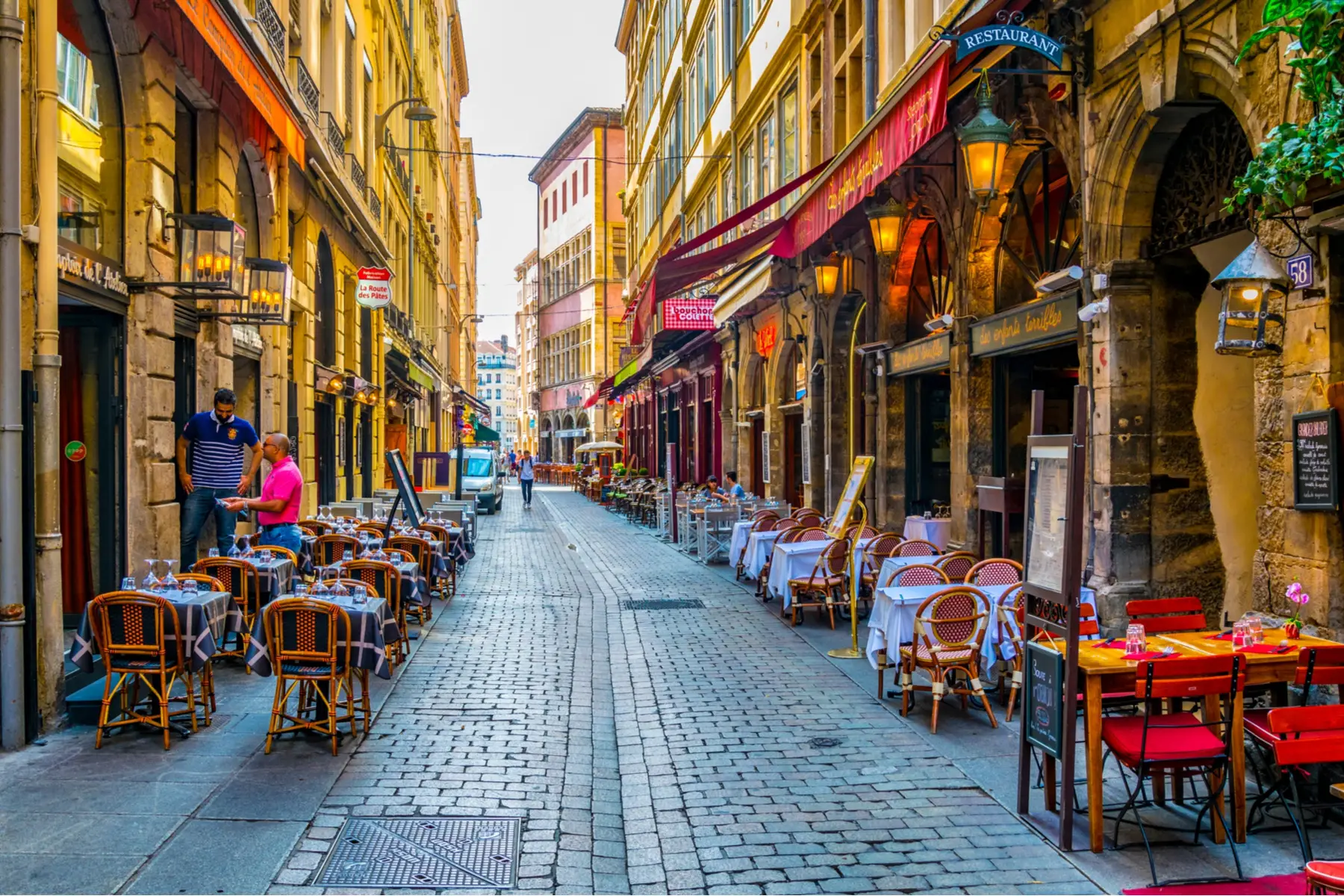
Situated at the confluence of the imposing Rhône and Saône rivers, Lyon has long been considered a gateway between northern and southern Europe. Before railroads and highways were developed, these rivers served as an important transportation route for large quantities of goods. The Romans already recognized this as being central to their wine trade. Then, centuries later, Italian traders used it to bring spices to Lyon from the Orient.
During the Renaissance period, Lyon began to be seen as the larder of France. At the time, a clear distinction was made between a bourgeoise cuisine; the choice cuts of meat and best wines that were shipped off to the aristocracy, and popular food for the masses. So as Lyon’s economy flourished, the population developed a culinary tradition with a focus on offal and innards.
The Mères Lyonnaises: Mothers of Lyon
This popular cuisine was developed and enriched by the Mères Lyonnaises, or the Mothers of Lyon. These were local female chefs who originally cooked for influential bourgeois families but set up their own restaurants in the 18th century. The first on record to wear this particular chef’s hat was Mère Guy, who ran an open-air café and dance hall in Mulatière.

Other notable Mères Lyonnaises followed in the 19th century, including Mère Brigousse. She was renowned for her quenelle dumplings in the shape of breasts, which she called the tétons de Vénus (Venus’ nipples). Later on, in the early 20th century, Mère Brazier became the first female chef to earn three Michelin stars for her two restaurants; La Mere Brazier in Lyon and La Mere Brazier in Le Col de la Luer.
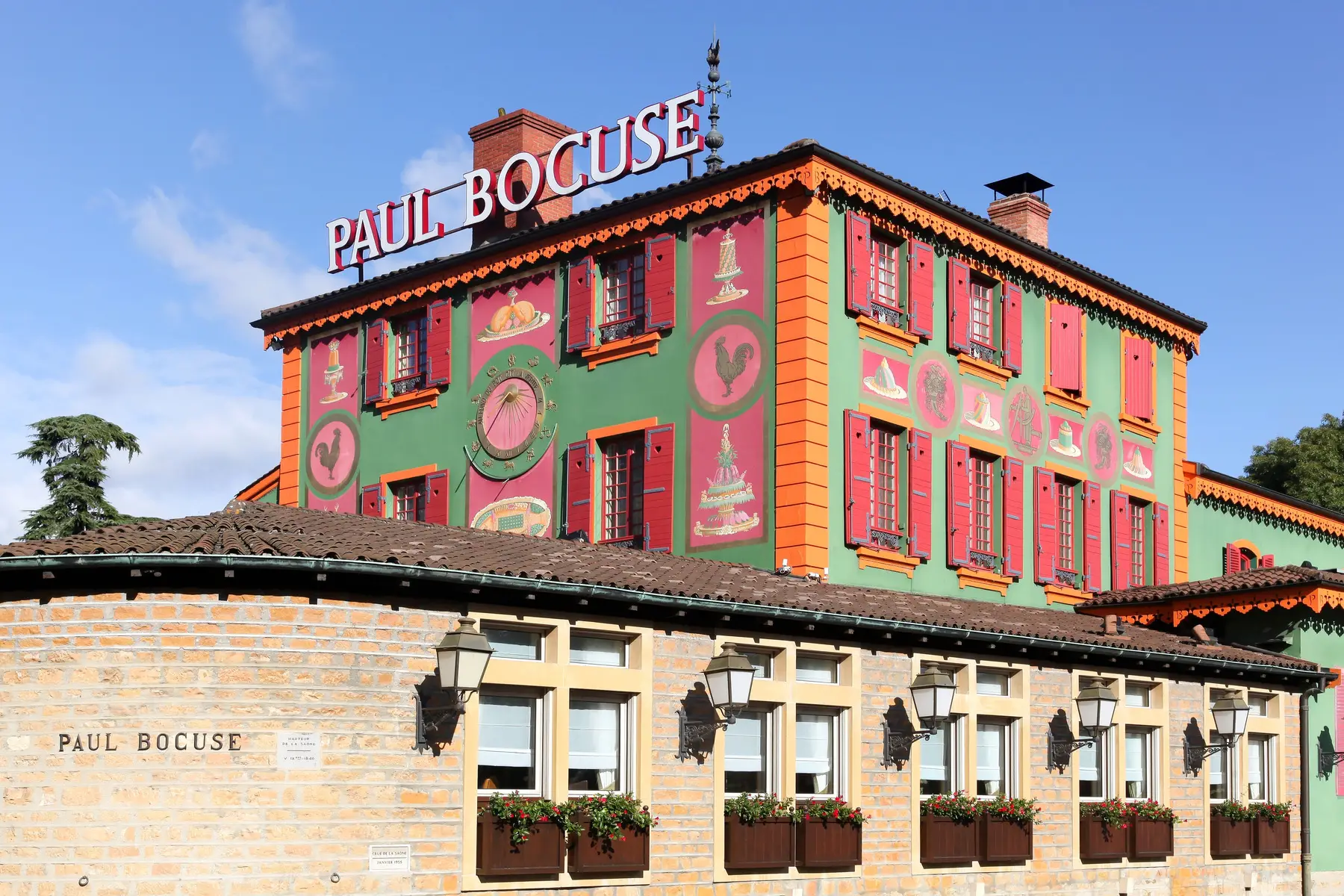
Then, after WWII, a young Paul Bocuse apprenticed with Mère Brazier. He went on to make an indelible mark on Lyon’s culinary scene. Awarded the title of Chef of the Century by the Guide Gault Millau in 1989, he has left his name to a hospitality school, an international chef’s competition, and ten restaurants; seven of which are in his spiritual home of Lyon. Today, Bocuse is known around the world for his gastronomic empire which helped to launch Lyon onto the international stage.
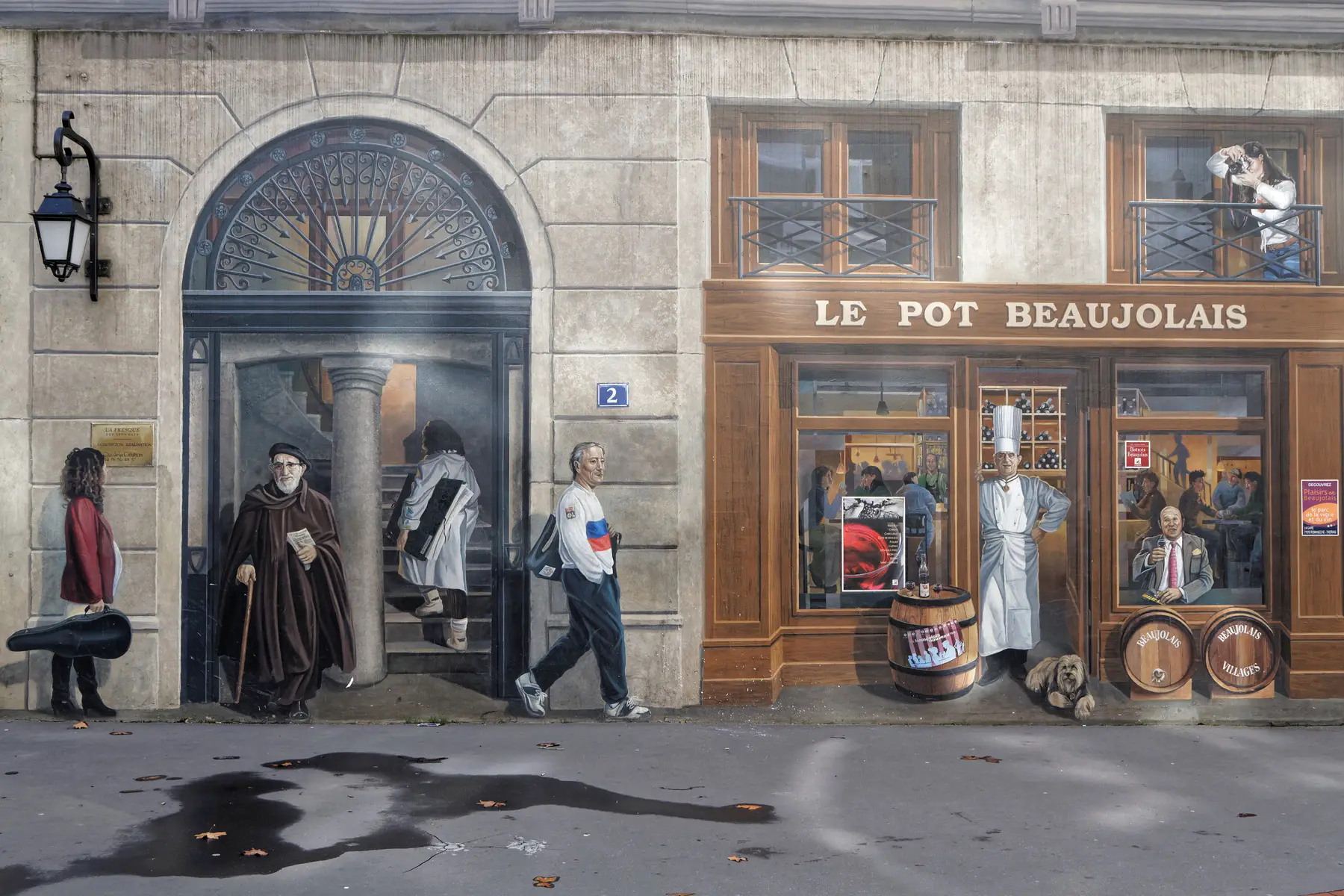
In fact, the city honors the memory of the legendary chef in its famous La Fresque des Lyonnais (the Mural of Lyonnais), which you will find in the 1st arrondissement. Painted by the artist cooperative CitéCréation between 1994 and 1995, the impressive 800-square-meter mural pays tribute to historical figures from Lyon who, like Bocuse, made their mark on the city and the world.
A new generation of prominent chefs
Today, Lyon’s culinary tradition lives on thanks to eminent chefs such as Mathieu Vianney (of La Mère Brazier), Joseph Viola (of Daniel et Denise), and Christian Têtedoie. The latter helms an eponymous Michelin-starred restaurant that offers unparalleled views of the city. A new generation of Lyonnaise chefs is also coming up hot on their heels.
This includes chefs Arnaud Laverdin (of La Bijouterie and Sapnà), Gaëtan Gentil (of Prairial), and Tabata and Ludovic Mey (of Les Apothicaires and Food Traboule). Needless to say, the spirit of Lyon cuisine is still very much alive today.
Popular local dishes and produce to try in Lyon
Unsurprisingly given its accolade as the gastronomic capital of the world, Lyon is home to many specialty dishes that you are unlikely to find elsewhere. So, if you are lucky enough to live there, here are some classic ones to try when you are out and about exploring the city’s culinary scene.
Poultry, fish, and meat dishes
A standard main in local Lyonnaise brasseries is the poulet de Bresse; a firm and flavorful chicken that has its own appélation controlée (controlled designation of origin). It is typically served with a creamy mushroom sauce. Another soft and palatable option is the quenelle de brochet; a pike dumpling served with Nantua sauce made with crayfish from the nearby Nantua lake. A simple lunchtime favorite, on the other hand, is Salade lyonnaise, which consists of fresh lettuce, lardons, crispy croutons, and a poached egg.

However, if you have a more adventurous palette, then Lyon is the place to try dishes such as escargots à la Bourguignonne; snails with parsley and garlic butter sauce. The homely, leftover-style cooking of the Mères lives on in Lyon’s cozy bistros (or bouchons), where a typical dish to try is the tablier de sapeur. This consists of beef tripe which is cooked in a court-bouillon, marinated in white wine, covered in breadcrumbs, and fried. It is usually served with steamed potatoes and a sauce gribiche; made with emulsified hard-boiled eggs which are mixed with mustard and chives.
Charcuterie and cheeses
The Lyon region is also famed for its charcuterie and cheeses. Among the most notable local cold cuts is the Jésus which is dried for a minimum of eight weeks, and the Rosette de Lyon which is made from pork leg and served in chunky slices. Some great local cheeses to sample include the deliciously creamy Saint-Marcellin and Saint-Felicien, the brandy-soaked Epoisse, and the semi-hard and almost sweet-tasting blue Fourme d’Ambert. The latter is actually one of the oldest cheeses in France.
You may also come across the cervelle de canut, which literally translates to “silk-weavers brains”. Typically served as a starter, this consists of a mixture of fromage blanc and fresh goat’s cheese seasoned with herbs, shallots, olive oil, and vinegar. While you can buy it in shops outside of Lyon, many French people prefer to make their own at home.
Sweet snacks
Those with a sweet tooth will no doubt enjoy sampling the coussins de Lyon. These are cushion-shaped green marzipan bites filled with chocolate ganache. You can find them in shops and bakeries all over the city.

A more filling option is the brioche aux pralines roses, an enticing buttery snack encrusted with bright pink sugar crumbs. Another delightful sweet treat is the bugne, Lyon’s take on the donut. You will discover this in most bakeries and patisseries throughout the city.
Wine
Finally, the vineyards all around Lyon provide something for every taste; from the dry white Chablis wines of Burgundy to the dark red and full-bodied Syrah wines, and the light and fruity Beaujolais. And for real aficionados, the valleys of the Côtes du Rhône, which lie south of Lyon, produce some of France’s most historic and well-loved wines. Among them is the unmissable Châteauneuf-du-Pape.
The best food markets and courts to visit in Lyon
Given Lyon’s title as the gastronomic capital of the world, it comes as no surprise that the city is home to numerous food markets and courts. Here are just a few to try if you are lucky enough to live in the city.
Outdoor food markets
Every self-respecting French town has at least a few regular morning outdoor markets providing fresh, local, and seasonal produce. Some of the most popular in Lyon include the Marché Saint-Antoine along the banks of the Saône at Place des Célestins, and the Marché de la Croix-Rousse, which sits high on the slopes of the Croix-Rousse neighborhood.

If you’re seeking a more multicultural vibe that reflects Lyon’s diverse population, however, then the Marché Salengro by the metro Gare de Vaise embraces everything from organic produce to North African and Middle Eastern cuisine. You should go there if only to sample a baghirir, a type of spongy Moroccan crêpe.
Les Halles de Lyon
The belly of Lyon, Halles de Lyon Paul Bocuse is a covered market located near the Part-Dieu train station. Known to locals simply as Les Halles, this veritable institution is far pricier than the average street market. That said, it has more upscale vendors, plus the advantage of being open until 19:00.
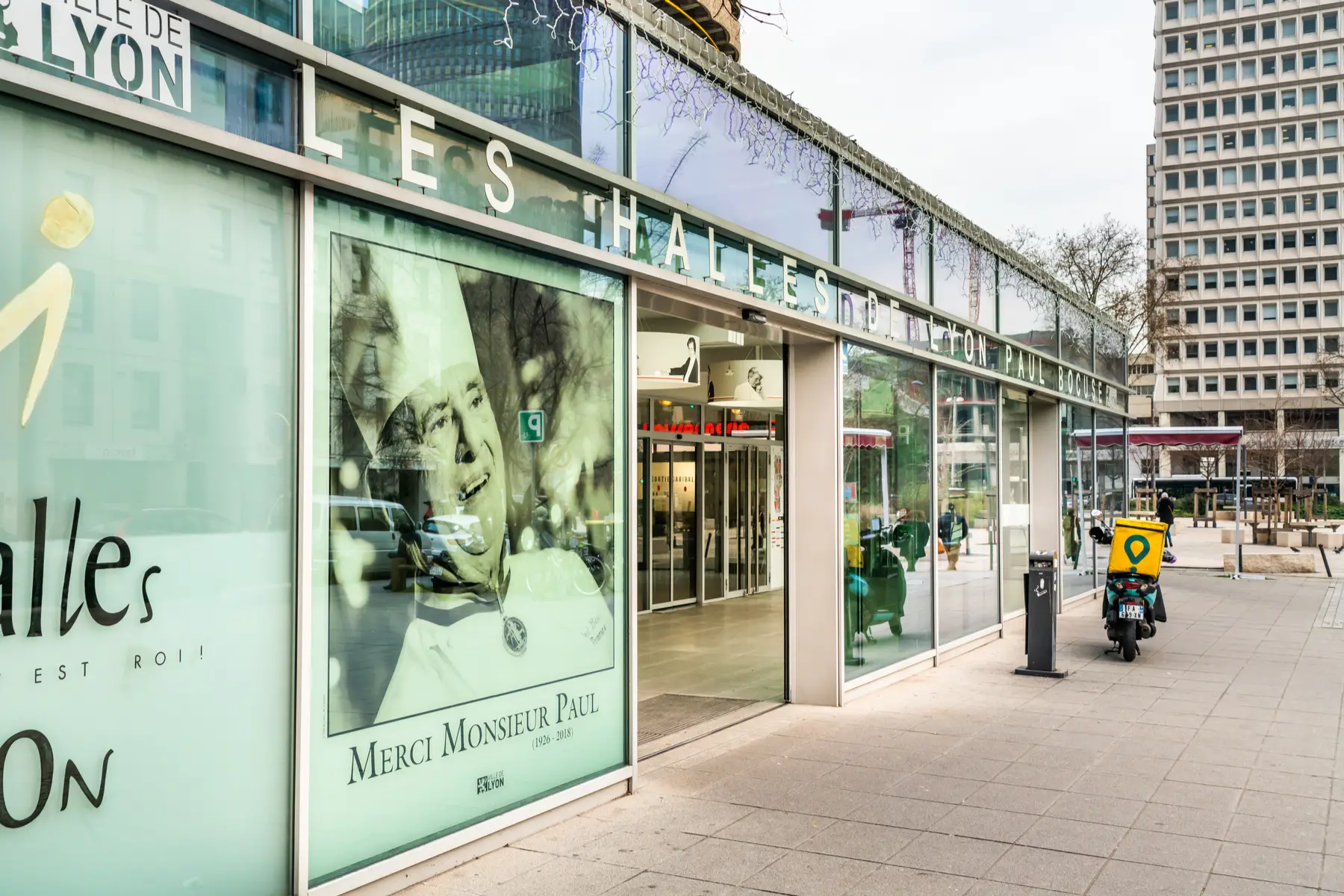
Regardless of your budget, you should go on a gastronomic pilgrimage to Les Halles. Here, you can smell the cheeses at Fromagerie Mons or La Mère Richard and gobble some oysters at Chez Antonin or Chez Léon. You can also ogle the colorful cakes at Délice des Sens or Maison Victoire. Sitting down to a matured steak or magret de canard burger at Les Garçons Bouchers is also an experience in itself. Les Halles also houses Passionnément Truffes – Maison Blanchet, a delicatessen and restaurant that specialises in every aspect of black and white truffles.
Food courts
Several food courts have popped up in Lyon in recent years. These are mostly run by young, innovative chefs who are looking to make gastronomy less pompous and more accessible. La Commune was the pioneer, opening in an industrial-style space in the bustling 7th arrondissement in March 2018. Here, you will discover a vast array of street food; ranging from North Africa and Brazil to Japan and back to France, via Italy.

Locals have embraced La Commune while others have latched onto the trend. For instance, HEAT is another popular food court, which is located in the Confluences neighborhood. This partially covered space houses four food containers that host new restaurants each week. These focus on local, seasonal food at affordable prices.
Meanwhile, at the top of the La Part-Dieu mall, Food Society serves as a living factory that honors the street food tradition. The bustling food court features ten stalls spread across a large terrace and quirky recycled decor. The Tour Rose, one of Lyon’s most remarkable Renaissance structures, is also home to Food Traboule, which consists of seven individual spaces; each with a different cuisine to explore.
The best restaurants to visit in Lyon
Fortunately for foodies, Lyon offers plenty of options to suit all budgets and satisfy all taste buds. From Michelin-starred restaurants and fine dining establishments to casual bouchons and vegetarian-friendly venues, you certainly won’t go hungry.
Michelin-starred restaurants
Lyon is home to a whopping 17 Michelin-starred establishments, so you have plenty to choose from. Mère Brazier and Takao Takano are among the few to have been graced with two stars. The first is helmed by Chef Mathieu Viannay, winner of the Meilleur Ouvrier de France award, and offers an exquisite take on local French dishes in a classic setting. The second, meanwhile, reflects the imagination and Japanese influences of its chef, Takao Takano. This is evident in everything from the venue’s poetic tasting menu to its simple and light decor.

Located on the top of Fourvière Hill overlooking the city, Les Terrasses de Lyon and Têtedoie also offer fantastic views. As well as featuring a gastronomic restaurant, Têtedoie also includes a bistro and rooftop terrace; the latter of which offers more affordable, but no less delectable, menus. Finally, you can’t go wrong with Léon de Lyon, which serves classic French cuisine with a twist.
Bouchons in Lyon
Lyon’s 20-odd official bouchons offer an antidote to luxury fine dining. In these unpretentious eateries, you may find yourself being seated at a long table – typically covered in a red-checkered tablecloth – next to fellow diners. Bouchons tend to be bright, loud, and busy, their walls often packed with pictures and clippings that attest to their long history. They serve wine by the jug and real local specialties, often with a heavy focus on pork and innards. This, for instance, is where you will find stuffed tripe, pickled pig’s feet, and veal’s head on the menu. Needless to say, they don’t cater much to vegetarians or picky eaters!
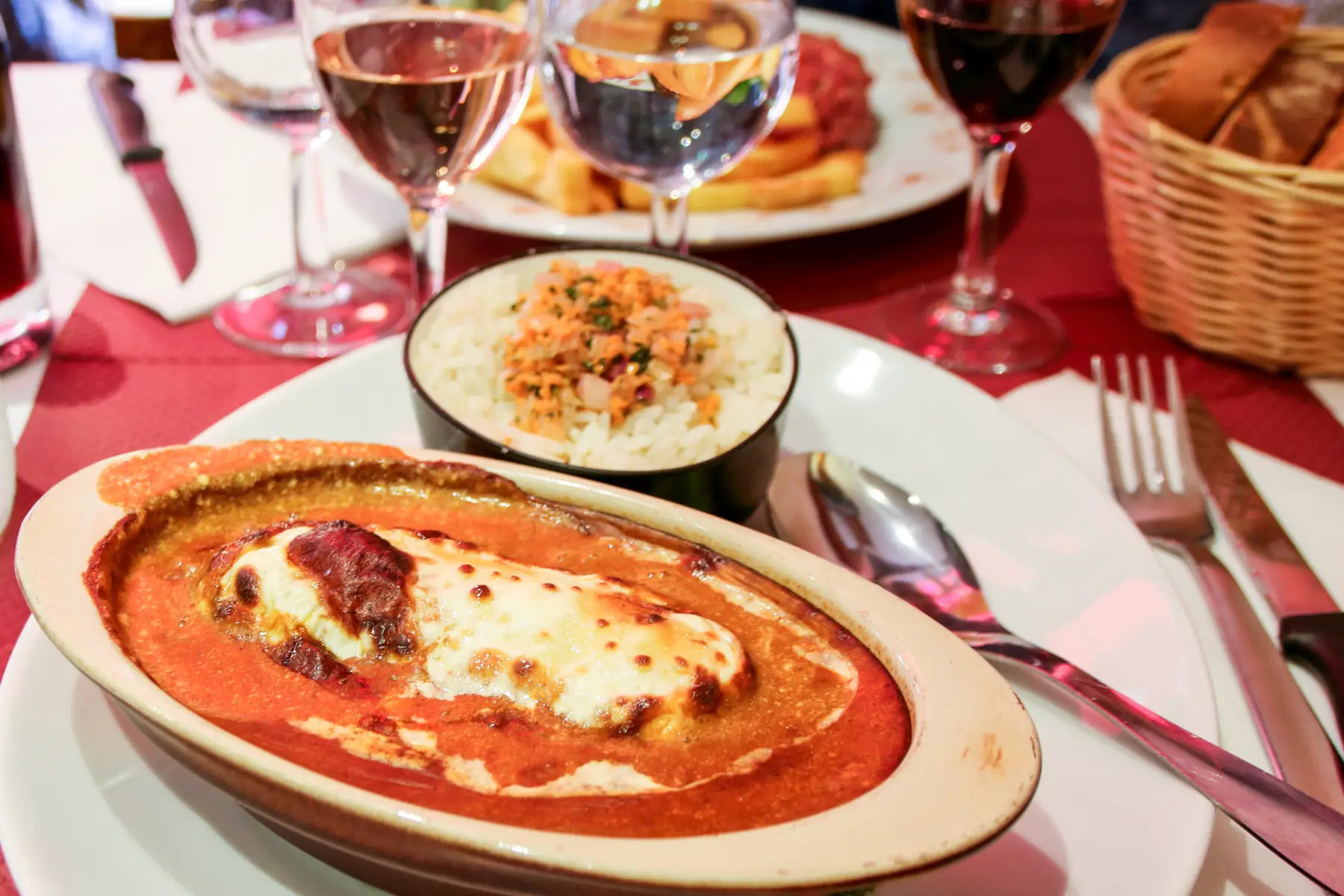
Among the most well-established and authentic bouchons in Lyon are Chez Paul, Le Garet, and Café des Fédérations. Celebrated chef Joseph Viola now also heads three bouchons – all named Daniel et Denise – in the Part-Dieu, Croix-Rousse, and Saint-Jean neighborhoods. He offers a more gastronomic take on the traditional cuisine canaille (simple pauper’s fare) while seeking to safeguard this popular cuisine by accomodating modern tastes. Just bear in mind, though, that these popular bouchons are mostly closed on Sundays (some on Saturdays, too) but open on Mondays when most other restaurants take the day off. Because they are so popular, you will also need to book in advance to avoid missing out.
Vegetarian and vegan options
While Lyon’s culinary tradition places an emphasis on animal produce, there are still several vegetarian and vegan-friendly restaurants on offer. Les Mauvaises Herbes, for instance, serves inventive meal options ranging from breakfast to evening tapas. These are made with organic and largely gluten-free ingredients.
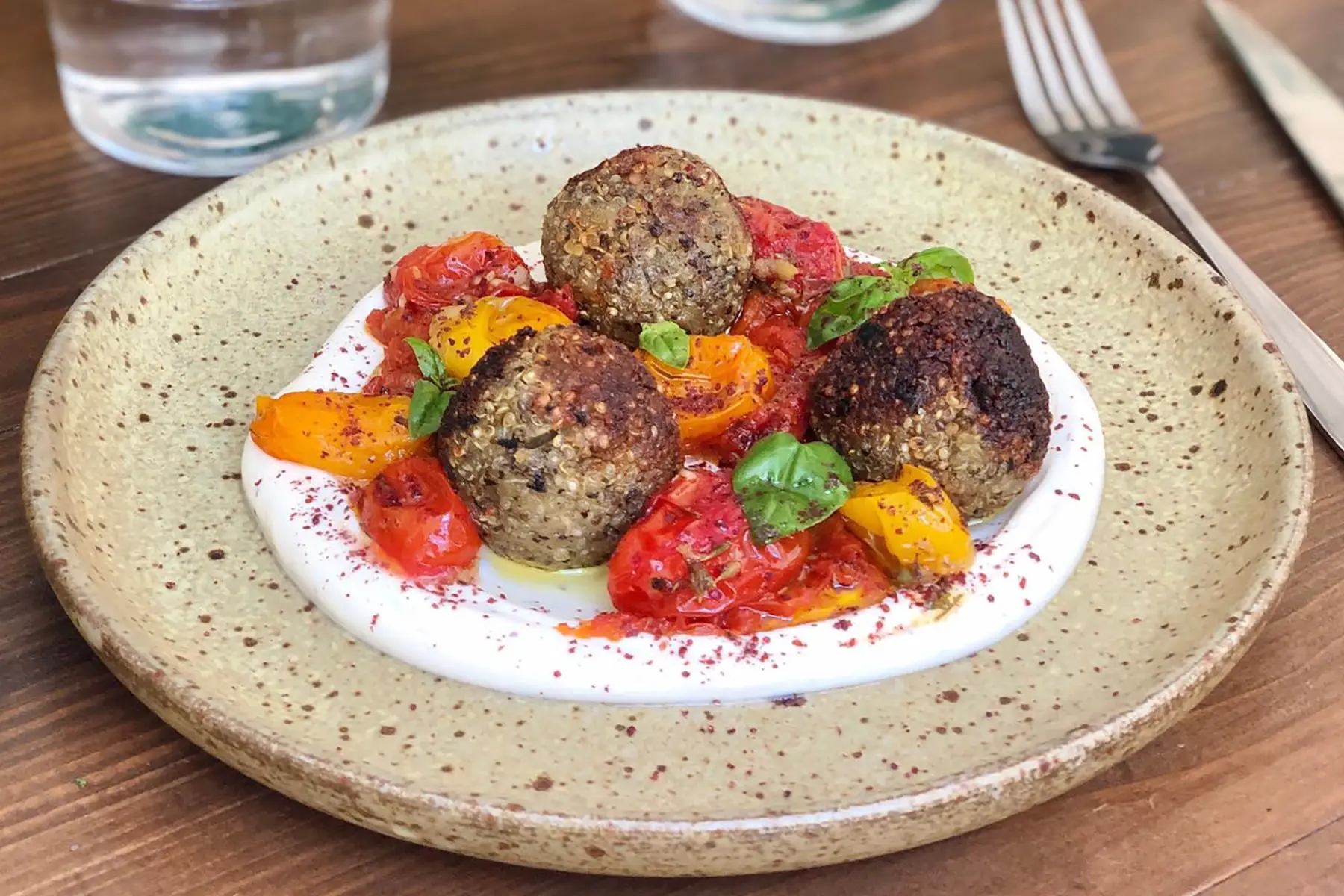
Boko Loco, meanwhile, is a 100% vegan eatery with four to five starter and main meal options served in mason jars. A more upscale vegetarian restaurant is Culina Hortus, which achieves both a modern and cozy feel through an elegant wood and stone interior. The venue’s dishes are also visual masterpieces.
Top food and drink events to explore in Lyon
Unsurprisingly, there is no shortage of food and drink-related festivities to explore in Lyon. That said, most major events take place between September and January; so if you are just visiting the city, make sure to time your trip carefully. Here are some of the best events to attend each year.
January
Sirha: this biannual global event for the catering and gastronomy industry is also a chance for the public to witness some masters at work; notably during the Pastry World Cup and the Bocuse d’Or gastronomic competition.
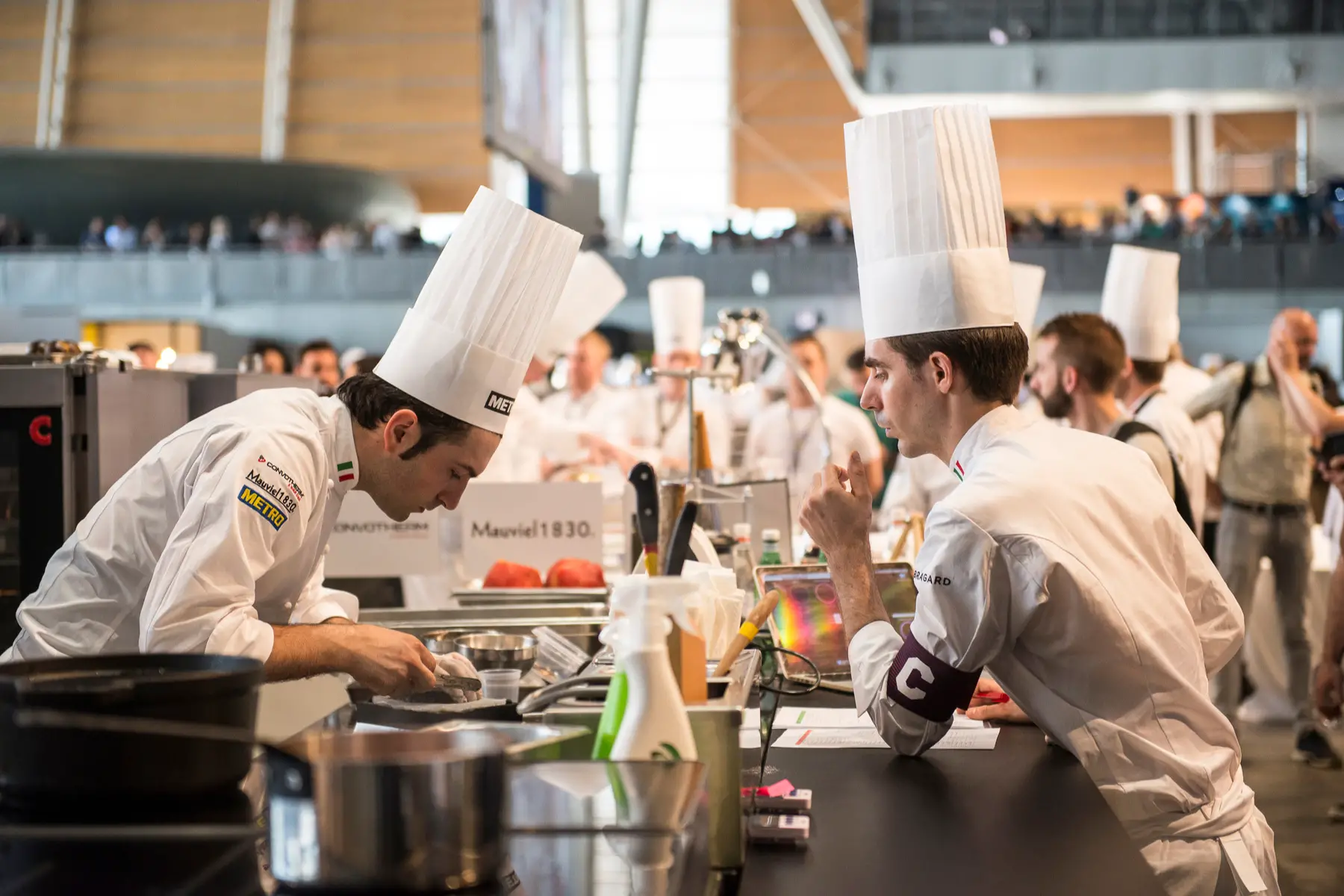
Biennale Internationale du Goût: known as BIG Lyon, this eight-day foodie event accompanies Sirha with exhibitions, dining events, and a special focus on soup. Previous editions have included a banquet in the Croix-Rousse tunnel, an 800-cheese platter, and a record-breaking fruit salad.
April
Lyon Bière Festival: this popular event invites visitors to sample French and international craft beers. The next edition is in 2022 at La Sucrière.
June
Refugee Food Festival: this collaboration between a selection of Lyon restaurants and refugee chefs highlights their talents and diverse culinary backgrounds.
September
Lyon Street Food Festival: a four-day fête that serves dishes from around the world, alongside music, cultural events, and parties.
Bière Sur la Ville: this pairing between beer and gastronomy consists of two weeks of festivities and beer tastings in partnership with bars and restaurants across Lyon.
October–November
Le Salon du Chocolat: the world’s biggest chocolate fair takes place over three days at the Centre de Congrès. Highlights include Chocoland workshops for kids and a fashion show with dresses made from chocolate!
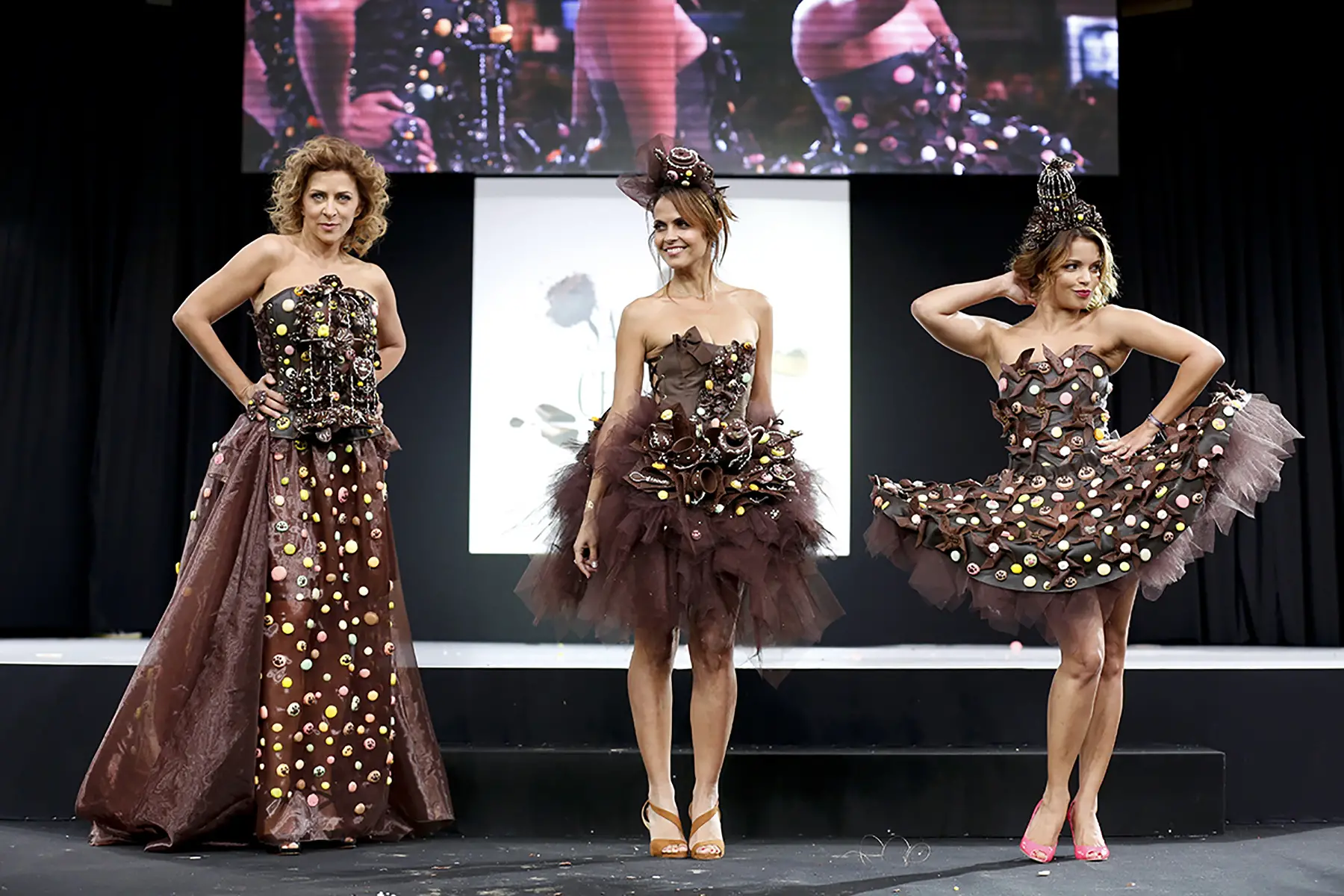
International Marathon of Beaujolais: visit the countryside near Lyon by joining a marathon, half-marathon, relay race, or ramble through vineyards and along rivers, from wine château to wine château, while sampling the local delights.
Salon des Vins des Vignerons Independants, Salon Vinomédia, and Lyon Tasting: these three wine shows invite guests to grab a glass and sip and purchase a large selection of wines from the region and beyond. Dates can vary somewhat from year to year, so keep an eye on the websites.
Useful resources
- This is Lyon – discover more delicious Lyonnais meals to try
- Visiter Lyon – find more great places to eat out in Lyon
- Visiter Lyon – find out all about the vineyards around Lyon
- Lazenne – an article on The Ultimate Wine Guide to Drinking in Lyon








